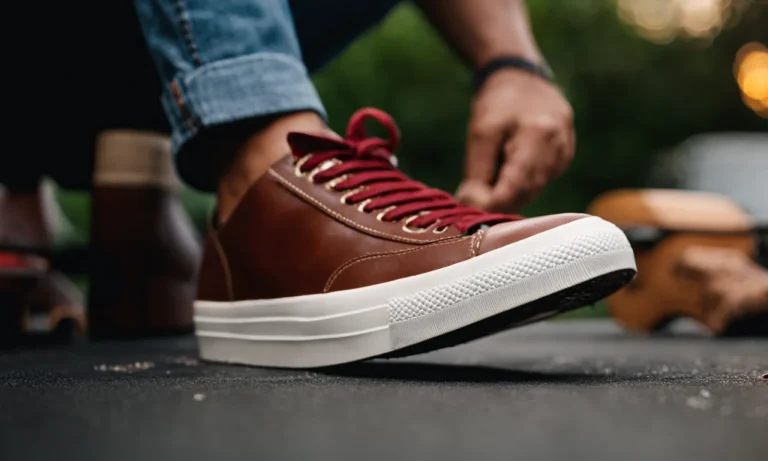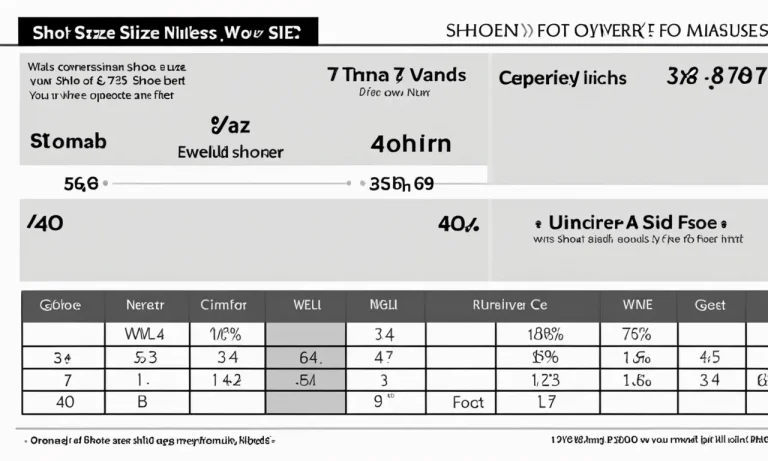Running while wearing combat boots can be challenging. The heavy, rigid boots worn by military personnel are not designed for running long distances. However, with some adjustments to your form and the right boots, running in combat boots is very possible.
If you’re short on time, here’s a quick answer to your question: Proper boot fit, using a midfoot strike, and loosening laces can help make running in combat boots more comfortable and efficient.
In this comprehensive guide, we’ll cover everything you need to know about running in combat boots, including potential benefits, challenges, tips for proper form, how to pick the right boots, and ways to modify boots for better running performance.
Benefits of Running in Combat Boots
Builds leg and ankle strength
One of the major benefits of running in combat boots is that it helps build leg and ankle strength. Combat boots are heavier and provide more resistance compared to regular running shoes. This increased resistance forces your leg muscles, including your calves, quads, and hamstrings, to work harder, resulting in improved strength and endurance.
Stronger leg muscles and ankles can help prevent injuries and enhance overall performance.
Improves running form
Running in combat boots can also improve your running form. The added weight and bulk of the boots make it necessary to maintain proper posture and form while running. This includes keeping your back straight, engaging your core, and lifting your knees higher.
By practicing good form, you can reduce the risk of injuries and optimize your running efficiency.
Prepares for loaded runs
Running in combat boots prepares you for loaded runs, such as military exercises or backpacking trips. These activities often require carrying heavy loads, and running in combat boots can help you adapt to the extra weight.
By training with the added weight of the boots, you can improve your endurance, stability, and overall performance during loaded runs.
Simulates tactical conditions
Another benefit of running in combat boots is that it simulates tactical conditions. Military personnel often have to run in combat boots while carrying equipment and navigating challenging terrains. By incorporating combat boots into your running routine, you can better prepare yourself for these tactical situations, improving your overall performance and readiness.
It’s important to note that while running in combat boots can provide several benefits, it’s crucial to ease into it gradually. Start with shorter distances and gradually increase your mileage to give your body time to adapt to the added stress and weight.
Additionally, make sure to choose boots that provide proper support and cushioning to minimize the risk of injuries.
Challenges of Running in Combat Boots
Running in combat boots presents a unique set of challenges that can make it more difficult than running in regular athletic shoes. Here are some of the main challenges you may encounter:
Heavier weight
One of the biggest challenges of running in combat boots is the added weight. Combat boots are typically heavier than regular running shoes, which can make each stride more challenging. The extra weight can put additional strain on your leg muscles and joints, making it harder to maintain your pace and endurance.
Decreased flexibility
Combat boots are designed to provide stability and support in rugged environments, but this can come at the cost of decreased flexibility. The stiff construction of combat boots can restrict the natural movement of your feet and ankles, making it harder to achieve a smooth and efficient running stride.
This lack of flexibility can also increase the risk of injuries, such as sprained ankles.
Potential for blisters
Another challenge of running in combat boots is the potential for blisters. The rigid materials and tight fit of combat boots can create friction against your skin, especially if your feet tend to sweat.
This friction can lead to painful blisters, which can make running uncomfortable and potentially hinder your performance. It is important to wear proper socks and break in your boots before attempting a long run to minimize the risk of blisters.
Slower paces
Due to the heavier weight and decreased flexibility of combat boots, it is common for runners to experience slower paces compared to running in regular athletic shoes. Running in combat boots requires more effort and energy expenditure, which can result in decreased speed and overall performance.
It is important to adjust your expectations and pace yourself accordingly when running in combat boots.
Despite these challenges, many military personnel and individuals who participate in tactical training still choose to run in combat boots. Running in combat boots can help improve strength, endurance, and mental toughness, which are crucial in combat situations.
However, it is important to listen to your body, take breaks when needed, and gradually increase the duration and intensity of your runs to avoid injuries.
Tips for Proper Running Form in Combat Boots
Focus on midfoot strike
When running in combat boots, it is important to pay attention to your foot strike. Instead of landing on your heels or toes, aim for a midfoot strike. This means that the middle part of your foot should make contact with the ground first.
It allows for better shock absorption and reduces the risk of injury. Remember, running in combat boots can be more strenuous on your feet, so adopting a midfoot strike can help alleviate some of the impact.
Use shorter, quicker strides
Combat boots are heavier and less flexible than regular running shoes, so it’s important to adjust your stride accordingly. Instead of taking long strides, try using shorter, quicker strides. This will help you maintain control and stability while running.
Additionally, it can reduce the strain on your muscles and joints, making your run more efficient and comfortable.
Lean slightly forward
When running in combat boots, it’s helpful to lean slightly forward from your ankles. This posture can improve your balance and prevent you from leaning back, which can put unnecessary strain on your lower back. However, be careful not to lean too far forward, as this can throw off your balance.
Find a comfortable and natural lean that allows you to maintain proper form and stability.
Swing arms to counterbalance legs
Proper arm movement is crucial when running in combat boots. To help maintain balance and rhythm, swing your arms in sync with your legs. This counterbalance motion can improve your overall running form and prevent your upper body from becoming too stiff.
Remember to keep your elbows at a 90-degree angle and avoid crossing your arms in front of your body.
Loosen laces
Combat boots are designed to provide support and stability, but wearing them too tightly can hinder your running performance. To avoid discomfort and potential foot problems, make sure to loosen your laces slightly before starting your run.
This will allow for better blood circulation and prevent unnecessary pressure on your feet. However, be cautious not to loosen them too much, as you still want to maintain a secure fit.
Remember, running in combat boots requires some adjustment to your running form. By focusing on a midfoot strike, using shorter strides, leaning slightly forward, swinging your arms, and loosening your laces, you can optimize your running experience in combat boots. Happy running!
Choosing the Right Combat Boots for Running
When it comes to running in combat boots, choosing the right pair is essential for comfort and performance. Here are some key factors to consider when selecting your running boots:
Opt for lightweight boots
Running in heavy and bulky boots can quickly cause fatigue and discomfort. Look for combat boots that are specifically designed for running and are lightweight. These boots are typically made with lightweight materials without compromising on durability and support.
They will allow you to move more freely and maintain your speed without feeling weighed down.
Consider boots with drain holes
Running in wet conditions or through water obstacles is common in military training or outdoor activities. Boots with drain holes are designed to allow water to drain out quickly, preventing your boots from becoming heavy and waterlogged.
This feature is especially important if you anticipate encountering wet or muddy terrains during your runs.
Choose breathable materials
During intense physical activities like running, your feet can become sweaty and prone to blisters. Look for combat boots made from breathable materials such as mesh or nylon. These materials promote airflow and help to keep your feet cool and dry.
Additionally, boots with moisture-wicking properties can also help to minimize sweat and discomfort.
Get properly fitted boots
Proper fit is crucial for any type of footwear, especially when it comes to running in combat boots. Ill-fitting boots can lead to blisters, foot pain, and even injuries. Visit a specialized store or consult with a knowledgeable professional to ensure you get the right size and width for your feet.
Don’t forget to try on the boots with the socks you plan to wear during your runs to ensure the perfect fit.
Look for flexibility in the sole
Flexibility in the sole of your combat boots is essential for running. A flexible sole allows for natural foot movement and helps to absorb shock, reducing the impact on your joints. Look for boots with a sole that provides a good balance of flexibility and stability.
This will enable you to maintain a comfortable stride and reduce the risk of injuries.
Remember, finding the right combat boots for running is a personal process. Take the time to research and try on different options to find the pair that suits your needs and preferences. Happy running!
Modifying Combat Boots for Running
Running in combat boots can be challenging due to their heavy and rigid design. However, with a few modifications, you can make them more suitable for running. Here are some tips:
Replace insoles with more cushioned ones
Combat boots usually come with standard insoles that provide minimal cushioning. To make them more comfortable for running, consider replacing them with more cushioned insoles. Gel or memory foam insoles are great options as they provide extra support and shock absorption, reducing the impact on your feet and joints.
Loosen laces
Tight laces can restrict movement and cause discomfort while running. Loosen the laces to allow your feet to move more freely and improve blood circulation. However, make sure they are still secure enough to provide sufficient support and prevent your feet from sliding inside the boots.
Apply moleskin/engto tape to prevent blisters
Running in combat boots can increase the risk of blisters due to the friction between your feet and the boots. To prevent this, apply moleskin or engto tape to the areas prone to blisters, such as the heels and toes.
These products provide a protective barrier and reduce friction, keeping your feet blister-free during your run.
Consider adding drainage holes
Combat boots are not designed for moisture-wicking, which can lead to sweaty and uncomfortable feet during a run. Consider adding drainage holes to the boots to improve ventilation and allow moisture to escape.
This will help keep your feet dry and prevent the development of blisters or fungal infections.
Use lightweight socks
The type of socks you wear can also impact your comfort while running in combat boots. Opt for lightweight and moisture-wicking socks that will keep your feet dry and prevent overheating. Avoid thick socks that can add unnecessary bulk and make your boots feel tighter.
By implementing these modifications, you can make your combat boots more suitable for running. Remember to listen to your body and take breaks if you experience any discomfort or pain. Happy running!
Conclusion
While running in combat boots takes some getting used to, with the right modifications and form adjustments, it is certainly achievable. The added weight and resistance can make your regular runs even more effective.
Focus on a midfoot strike, quick cadence, and proper boot fit and modifications. Approach your combat boot runs gradually, and you’ll be moving efficiently in no time. With practice, running in combat boots can build strength and simulate tactical conditions.






